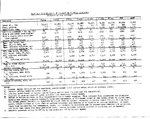Shortround6
Lieutenant General
In America's Hundred Thousand empty weight does NOT include guns, gunsight, gun camera, oxygen equipment and the trapped oil and fuel. Sometimes, depending on Army or navy and the date it might not include armor, communications gear, emergency equipment. at some points in time one or another category would be shifted to include/exclude certain items.

